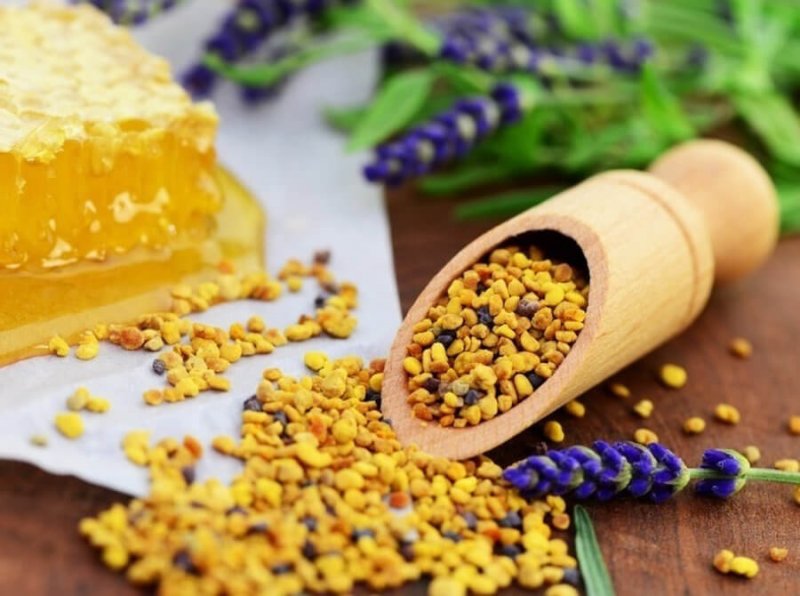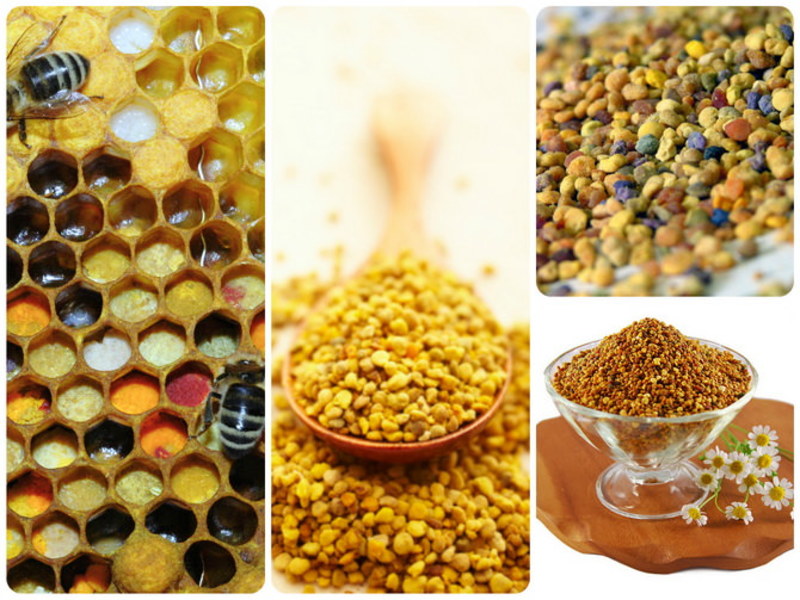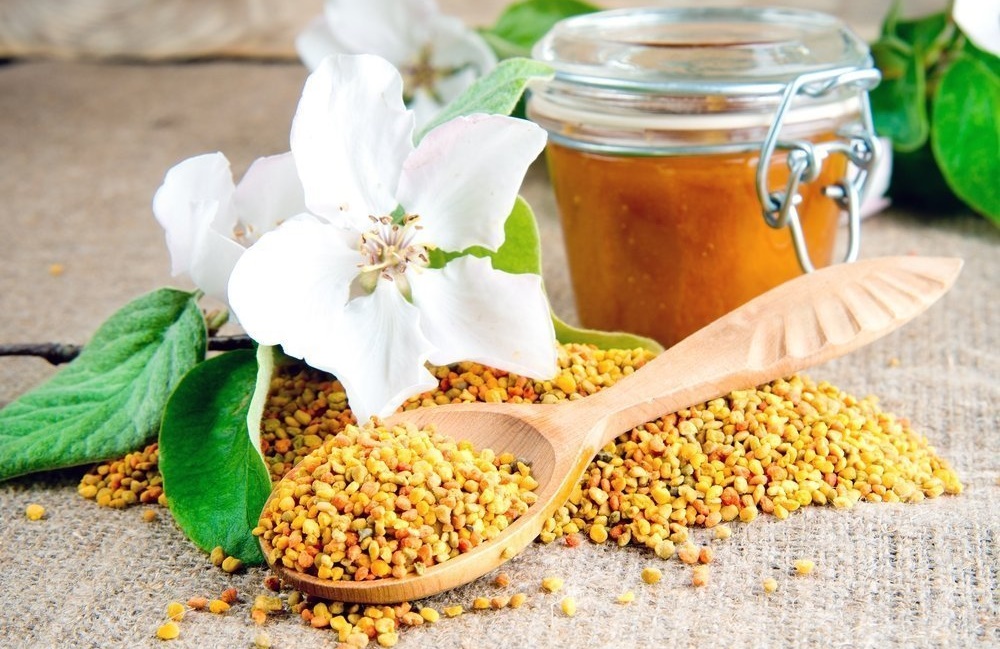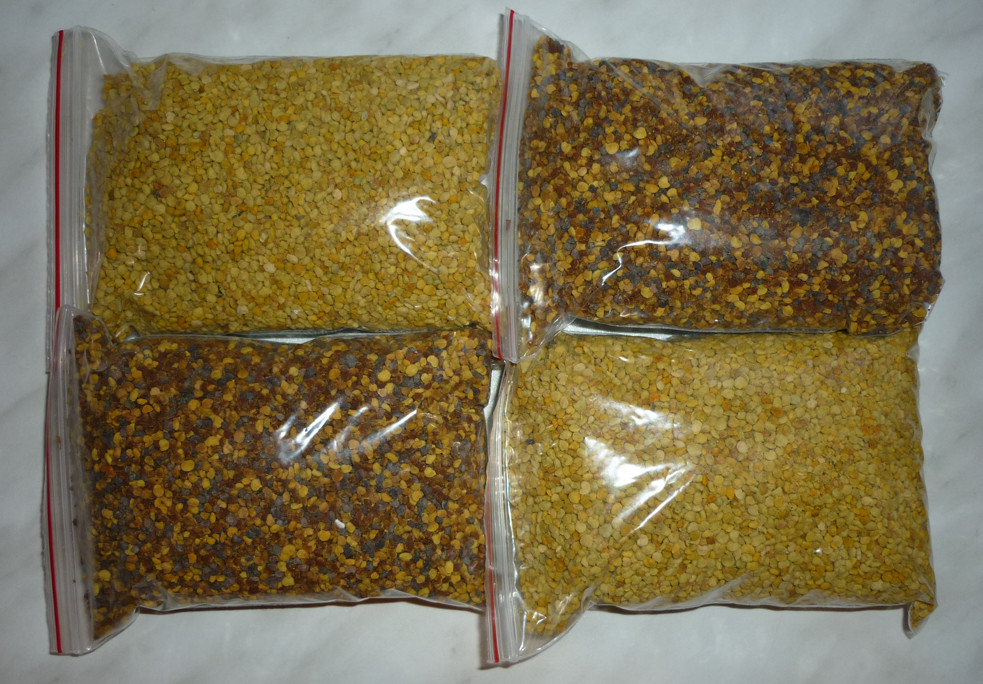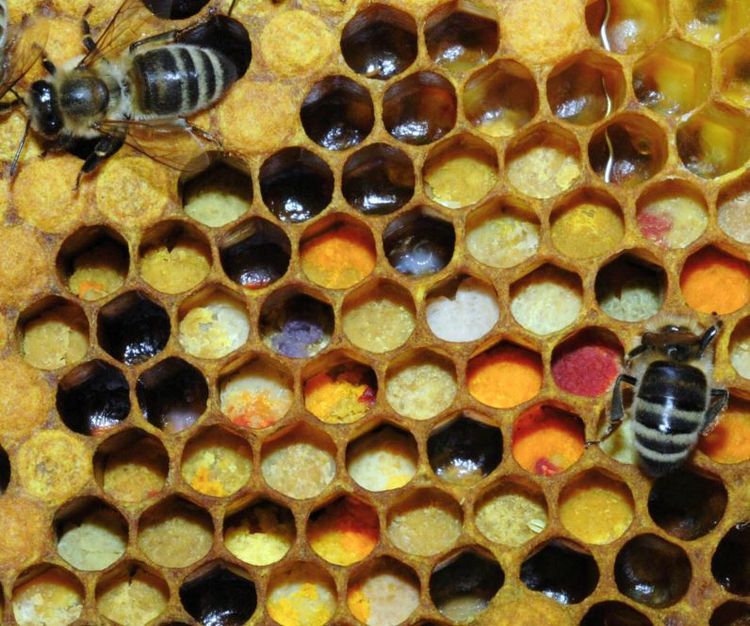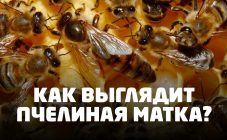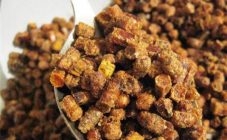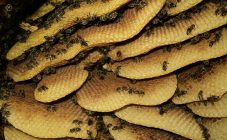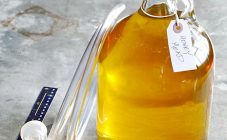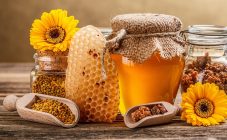Content:
All beekeeping products have unique medicinal properties, and bee pollen, which is also known as bee pollen, is no exception. This product is very popular with connoisseurs, but not popularized enough among the general population. Meanwhile, it is a storehouse of vitamins, micro- and macroelements. It has high nutritional value and is a natural antibiotic. Regular intake of bee pollen in the off-season will help to avoid frequent colds in adults and children. In addition, in the complex treatment, the intake of this product will be a good help to drug therapy.
Bee pollen - what is it
Among beekeeping products, bee pollen is in particular demand, because, like honey, it is a unique product as a symbiosis of plant and animal origin. What is pollen is known from school botany lessons - it is the sperm of plants, thanks to which fertilization occurs.
The bees themselves do not produce pollen, therefore the name "bee pollen" rather corresponds to the origin of this product. The starting material for getting pollen is pollen, because bees collect nectar and simultaneously dip their legs into pollen. Moreover, bees collect this pollen deliberately, as they immediately ferment it with saliva. On their hind legs, they form two balls of fermented pollen, which they carry to the hive in the hope that it will become their food. It is no coincidence that the bee pollen is called bee bread by beekeepers.
When they bring it to the hive, they peel it off their paws, and this is food for the queen and the worker bees. Thus, bees not only satisfy their hunger, but also protect themselves from infectious diseases, from which they are not immune. Depending on where the pollen, bee pollen or bee pollen is collected, it has a different color and composition:
- Linden pollen has a green color, and its use protects against colds, lowers body temperature.
- Willow pollen is yellow, it is recommended to take it for infectious diseases, because it is an excellent natural antibiotic that destroys pathogenic bacteria without side effects.
- Dandelion pollen perga has an orange color and is indispensable for diseases of the gastrointestinal tract.
- Bee bread made from flowering clover of pinkish-cream color is very useful in the treatment of cardiovascular diseases and for the restoration of cerebral circulation.
How beekeepers collect polish
A bee, loaded with nectar and bee bread, returns to the hive with a sense of accomplishment, it is here that enterprising beekeepers adapt special bags for collecting bee pollen to the entrance, the hole becomes narrower, and the bee, making its way into the hive, dragging its hind legs with beads of bee bread, loses them and they fall into the bag. Further:
- Healer beekeepers sort the balls by color so that the purpose of the bee bread is targeted.
- Beekeepers, who do not particularly delve into the intricacies of traditional medicine, collect it in bulk and sell it, packing it in small plastic bags.
Composition of bee pollen
Flower pollen, due to its purpose, is the quintessence of any plant, because it is designed to continue the existence of this species. Therefore, all the best and most useful of what this or that plant possesses is concentrated in it. In addition, enzymes contained in bee saliva play an important role in the benefits of bee bread. Therefore, the composition of this product is impressive for the richness of biologically active substances:
- The proteins contained in bee bread are rich in essential amino acids, which the human body itself does not produce, and which come only with food. In terms of their amino acid composition, bee bread proteins surpass animal milk protein, which is considered the champion among animal proteins in this indicator. This means that taking bee bread in the postoperative period will significantly reduce the regeneration of damaged tissues.
- Bee pollen contains phospholipids, which include polyunsaturated fatty acids of the Omega-3 and Omega-6 groups, as well as monounsaturated fatty acids of the Omega-9 group. Ingestion of bee leaves will make cell membranes impervious to free radicals, which means that bee is an excellent antioxidant.
- The flavonoids and pheno acids contained in the bee colony have a wide spectrum of action on the human body. They help to strengthen the walls of blood vessels, have anti-tumor, anti-inflammatory and anti-sclerotic effects.
- The phytosterols found in pollen, especially methylene cholesterol and 3-phytosterol, help maintain healthy blood vessels.
- Phytohormones, which are rich in pollen, have a beneficial effect on the human hormonal system as a whole, ensuring the stability of the hormonal background.
- In terms of the content of vitamins, bee bread is much superior to pharmacy vitamin complexes, moreover, they are completely absorbed by the body, in contrast to pharmaceutical preparations. Vitamins of group B are presented very widely - B1,2,3,6,8.9. It is known that vitamins of this particular group ensure the stability of the central and peripheral nervous system. Vitamin E - tocopherol and tocotrienol, indispensable for the skin and reproductive organs, A - retinol maintains the organs of vision, hair, nails in a healthy state.
- Micro and macro elements in the composition of bee bread are widely represented. These are potassium, calcium, phosphorus, iodine, manganese, silver, gold. Perhaps, if you put all the elements of the periodic table, then you will not be mistaken. This property of bee bread allows you to restore the deficiency of trace elements in the human body after a long illness or serious physical exertion.
With this composition, the bee pollen simply must be curative, and it copes with this function brilliantly.
How and where bees collect nectar, its properties
Bees collect nectar from flowering plants and stuff them into their goiter - one of the compartments of the bee's stomach designed specifically for collecting nectar. It is there that special glands are located, which:
- fermenting nectar;
- break down the glucose contained in it;
- enrich the nectar with dextrins.
Upon returning to the hive, the bee loads the cells with nectar, and the worker bees sort it:
- part of the nectar is used for feeding the larvae;
- the other part is laid in the honeycomb for maturation;
- when laying nectar in a honeycomb, worker bees also enrich it with enzymes.
The temperature in the hive is quite high. Working on the creation of reserves, worker bees ventilate the air in the hive with their wings, helping ripening honey get rid of excess moisture and acquire the necessary viscosity. The nectar itself consists of 50% moisture, and honey contains no more than 20% moisture. Viscous honey in combs is sealed with wax and ripens in a sealed package.
The bee bread granules are placed in the adjacent honeycomb and are also filled with nectar. The whole fermentation process is the same as when laying honey in a comb. Honeycombs with perga differ from ordinary honey in color:
- honey with bee pollen - yellow;
- pure honey is dark, almost brown in color.
How to use honey with pollen, how to cook
It is completely impractical to take honey with pollen harvested by bees from the hive:
- For bees, this is an excellent top dressing in winter, the best. Therefore, to deprive them of this preparation is to doom them to a half-starved state. No sugar feeding can replace bee bread with honey.
- Perga is an excellent antibiotic, because the bees feeding on it in winter do not get sick and tolerate wintering well.
Therefore, experienced beekeepers try not to "rob" their breadwinners, trying to prepare bee bread with honey for medicinal purposes on their own:
- It is necessary to grind the bee bread - this can be done in a blender or coffee grinder. The finer the beech is ground, the more homogeneous and useful the initial product is.
- Heat the settled honey in a water bath to a liquid state.
- Mix honey and ground bee bread in a ratio of 20% bee bread and 80% honey. This is the ideal ratio for obtaining a medicinal product.
The mass prepared in this way should be poured into dry sterile jars and rolled up.
You need to take the mixture according to the following scheme:
- For preventive purposes in the off-season, 1 tbsp. spoon in the morning on an empty stomach, 1 hour before breakfast.
- For medicinal purposes, 3 times a day for 1 dec. spoon 0.5 hours before meals.
How bee pollen is stored at home
The shelf life of the pure bee bread depends on the quality of the bee bread itself and the conditions of its storage:
- It is very important that the bee bread is well dried and packaged in hermetically sealed bags. Because the access of air promotes the oxidation of fatty acids and the breakdown of proteins contained in the bee colony.
- The storage place must be protected from moisture, since the polish quickly grows moldy at high humidity.
- Storage temperature should not exceed 14 ° C.
- Refrigerated storage is justified when sealed.
Under these conditions, bee pollen can be stored for 1 year.
The bee bread prepared in the above way with honey in hermetically sealed jars can be stored for up to 5 years without compromising quality.
How to eat pollen in granules for adults, contraindications
First of all, it is worth clarifying why you need to take a bee pollen. Knowing about its composition and useful properties, it is easy to understand that bee bread is used for:
- maintaining immunity at the proper level;
- recovery of strength and in depressive conditions;
- prevention of cardiovascular diseases;
- treatment of the reproductive system;
- stimulation of regeneration processes in case of injuries, after operations and burns;
- prevention and treatment of colds ARVI, acute respiratory infections and ENT diseases;
- improving the rheological properties of blood.
Adults can take pollen for medicinal purposes according to the following scheme:
- Pure polish in granules for medicinal purposes - 1 hour each. spoon 3 times a day 0.5 hours before meals.
- For preventive purposes - twice a day in the morning on an empty stomach and in the evening before bedtime, 1 teaspoon, dissolving the granules until they are completely dissolved in the mouth.
Even such a super-product as bee colony may have contraindications, and this should be remembered:
- Individual intolerance to the product is possible, which happens extremely rarely. Therefore, the first time you should take bee bread literally at the tip of a teaspoon. Dissolve it and follow the reaction of your body.
- It should not be taken by people who have poor blood clotting. Because bee bread thins the blood, and any bleeding for such people can be fatal.
In other cases, everyone can be treated with bee bread or take it for preventive purposes without any side effects. You can treat serious diseases as part of complex therapy or engage in monotherapy, but it is better to do this after consulting a doctor.
